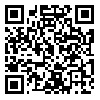Volume 1, Issue 2 (2013)
CFL 2013, 1(2): 53-82 |
Back to browse issues page
Download citation:
BibTeX | RIS | EndNote | Medlars | ProCite | Reference Manager | RefWorks
Send citation to:



BibTeX | RIS | EndNote | Medlars | ProCite | Reference Manager | RefWorks
Send citation to:
A Study on the Semiotic Concepts of Div (Demon) in Persian Folk Culture. CFL 2013; 1 (2) :53-82
URL: http://cfl.modares.ac.ir/article-11-1237-en.html
URL: http://cfl.modares.ac.ir/article-11-1237-en.html
Abstract: (8807 Views)
Div is a general name as well as a title for all supernatural creatures in Iran. On the other hand, Iranians know Div as an independent and solitary creature. Div has got also similar beings like Jins in Arabic culture, which in folkloric traditions, there is not any difference between them generally. During the history, Div’s character has passed a lot of evolutions regarding to what is today we know about his/her vast and extended concept. In ancient times, all evil and dirty aspects were attributed to Div, and in the middle Persian literature, Div and Devil (Ahriman) had been born in the mind beside each other as a unit. Iranian myths show that Divs have got humane qualities most of the time. Div’s adventure has made complex the meaning of the word “Div” in Persian culture and folklore. So sometimes, Div is a metaphor image of the Devil, Satan, Jin, Pari, Al, Davalpa, Nasnas and so on, and occasionally he/she just indicates to a monster with a definite shape and function (for instance: black skin, boar like teeth, blue eyes with thick dark lips, multi-head, tail, horn, great ears, hairy body, a couple of wings, and cannibalistic manners). In addition, the Divs’ character in folkloric narrations has been changed more and more from the first Islamic decades till now. The aim of this research is to study different concepts of Div and his/her character similarities with other supernatural creatures during the past eras in Iranian culture and folklore from different aspects.
Article Type: Research Paper |
Subject:
Popular literature|Languages and Dialects Public|Folklore|Ethnography|Critical theories of literature and popular culture
Received: 2013/12/20 | Accepted: 2014/01/28 | Published: 2014/05/22
Received: 2013/12/20 | Accepted: 2014/01/28 | Published: 2014/05/22
| Rights and permissions | |
 |
This work is licensed under a Creative Commons Attribution-NonCommercial 4.0 International License. |






